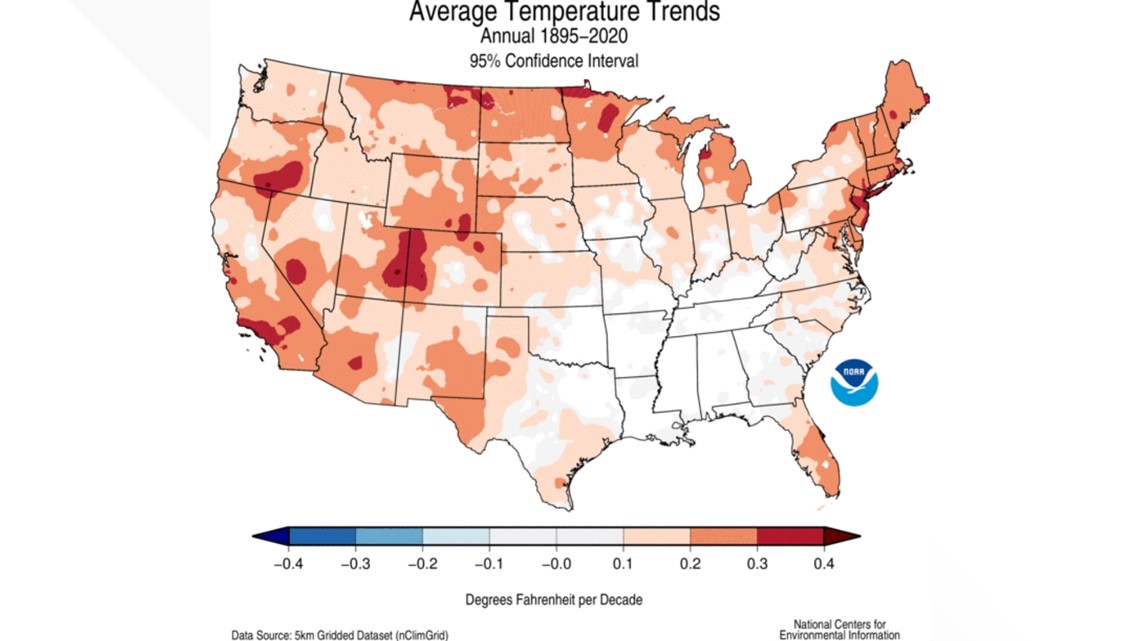DENVER — Segments of Colorado are lighting up on a map that tracks rising temperatures.
The map from the National Oceanic and Atmospheric Administration (NOAA) indicates San Miguel County, in the southwestern part of the state, is a hot spot, and that can impact how people live their day-to-day lives.
"It absolutely feels like a threat," county manager Mike Bordogna said, referring to everything from the layer of dust evaporating their snow pack, to drought, to fire concerns.
Bordogna said the entire county is impacted.
"The east end of the county, we have a tourism resort-based economy based on ski area and the historic town. We definitely fear if we have continued droughts and lesser snowpack, that will affect that visitation and the whole related economy to winter tourism," said Bordogna.
"On the west end of the county, it's more the ranching and agriculture economy. It's equally threatened if not more, per capita, because of multiyear drought."


"We've seen some large ranches sold out there, although nobody is saying that's why," he added. "They may be trying to get out of the ranching business, I don't think it's a surprise they are seeing greater challenges with water availability and plant production."
Assistant State Climatologist Becky Bollinger said the map was put together by plotting temperatures from 1895 to 2020, and then calculating the linear trend. She said this map and the hot spots can vary depending on what time frame the data was collected, but that it reflects the overall trend in Colorado.
"The mountains are experiencing more significant warming due to how climate change is impacting basically the entire globe," Bollinger indicated. "We know warming is more significant closer to the poles, the higher in latitude and higher elevations."
Bollinger said Colorado has warmed by 2.2 degrees Fahrenheit over the last century and in the same amount of time, San Miguel County went up by by 3.3°F.
"We've seen consistent warming," she said.
While the change can be hard to wrap your mind around, Bollinger said we are now at the point where it's impacting everyday lives, even things as simple as going outside.
"The air quality is poorer, you can't go outside to the things you want to do. The national and state forests are closing during fires," said Bollinger. "There are a lot of implications for people who live in the city. You have to go outside at some point."
San Miguel County has several projects in the works to address this issue including new building codes, so construction is as close to net-zero carbon emission as possible, as well as working on forest health, funding for wildfire mitigation and investing in public transportation.
The county is also working on affordable housing. It isn't uncommon for someone to have a two-hour commute round trip because housing closer to workplaces is too expensive.
"That's creating 10.5 metric tons of carbon on an annual basis," said Bordogna. "More housing closer to employers can help with that."
"Periodically, there is a small reprieve that lulls people into a sense of complacency," he added. "You think, 'Oh, it's a normal pattern.' If you look at our climate, look at the snowpack and run-off amount over a multi-year period, it's pretty easy to see we are drying up."
SUGGESTED VIDEOS: Full Episodes of Next with Kyle Clark

